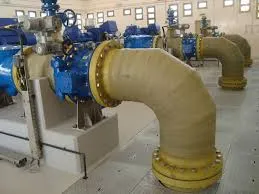
-
 Afrikaans
Afrikaans -
 Albanian
Albanian -
 Amharic
Amharic -
 Arabic
Arabic -
 Armenian
Armenian -
 Azerbaijani
Azerbaijani -
 Basque
Basque -
 Belarusian
Belarusian -
 Bengali
Bengali -
 Bosnian
Bosnian -
 Bulgarian
Bulgarian -
 Catalan
Catalan -
 Cebuano
Cebuano -
 China
China -
 China (Taiwan)
China (Taiwan) -
 Corsican
Corsican -
 Croatian
Croatian -
 Czech
Czech -
 Danish
Danish -
 Dutch
Dutch -
 English
English -
 Esperanto
Esperanto -
 Estonian
Estonian -
 Finnish
Finnish -
 French
French -
 Frisian
Frisian -
 Galician
Galician -
 Georgian
Georgian -
 German
German -
 Greek
Greek -
 Gujarati
Gujarati -
 Haitian Creole
Haitian Creole -
 hausa
hausa -
 hawaiian
hawaiian -
 Hebrew
Hebrew -
 Hindi
Hindi -
 Miao
Miao -
 Hungarian
Hungarian -
 Icelandic
Icelandic -
 igbo
igbo -
 Indonesian
Indonesian -
 irish
irish -
 Italian
Italian -
 Japanese
Japanese -
 Javanese
Javanese -
 Kannada
Kannada -
 kazakh
kazakh -
 Khmer
Khmer -
 Rwandese
Rwandese -
 Korean
Korean -
 Kurdish
Kurdish -
 Kyrgyz
Kyrgyz -
 Lao
Lao -
 Latin
Latin -
 Latvian
Latvian -
 Lithuanian
Lithuanian -
 Luxembourgish
Luxembourgish -
 Macedonian
Macedonian -
 Malgashi
Malgashi -
 Malay
Malay -
 Malayalam
Malayalam -
 Maltese
Maltese -
 Maori
Maori -
 Marathi
Marathi -
 Mongolian
Mongolian -
 Myanmar
Myanmar -
 Nepali
Nepali -
 Norwegian
Norwegian -
 Norwegian
Norwegian -
 Occitan
Occitan -
 Pashto
Pashto -
 Persian
Persian -
 Polish
Polish -
 Portuguese
Portuguese -
 Punjabi
Punjabi -
 Romanian
Romanian -
 Russian
Russian -
 Samoan
Samoan -
 Scottish Gaelic
Scottish Gaelic -
 Serbian
Serbian -
 Sesotho
Sesotho -
 Shona
Shona -
 Sindhi
Sindhi -
 Sinhala
Sinhala -
 Slovak
Slovak -
 Slovenian
Slovenian -
 Somali
Somali -
 Spanish
Spanish -
 Sundanese
Sundanese -
 Swahili
Swahili -
 Swedish
Swedish -
 Tagalog
Tagalog -
 Tajik
Tajik -
 Tamil
Tamil -
 Tatar
Tatar -
 Telugu
Telugu -
 Thai
Thai -
 Turkish
Turkish -
 Turkmen
Turkmen -
 Ukrainian
Ukrainian -
 Urdu
Urdu -
 Uighur
Uighur -
 Uzbek
Uzbek -
 Vietnamese
Vietnamese -
 Welsh
Welsh -
 Bantu
Bantu -
 Yiddish
Yiddish -
 Yoruba
Yoruba -
 Zulu
Zulu
FRP Chimney Construction and Installation for Industrial Applications
FRP Chimney Construction and Installation for Industrial Applications
Fiber Reinforced Polymer (FRP) chimneys have gained popularity in industrial applications due to their lightweight, corrosion-resistant, and durable nature. These structures provide critical solutions for venting fumes and gases while offering a long lifespan, minimizing maintenance costs, and enhancing overall efficiency. This article discusses the key aspects of FRP chimney construction and installation.
Advantages of FRP Chimneys
One of the most significant advantages of FRP chimneys is their resistance to corrosion. Traditional materials, such as steel or concrete, are often susceptible to deterioration from chemicals and environmental factors. In contrast, FRP is designed to withstand harsh conditions, making it ideal for industries such as chemical processing, oil and gas, and pulp and paper manufacturing.
Additionally, FRP chimneys are lightweight. This characteristic simplifies transportation and installation, allowing for reduced structural support requirements. Unlike heavy brick or concrete chimneys, FRP can often be installed with less specialized equipment, translating to lower labor costs and faster completion times.
Design Considerations
When designing an FRP chimney, several factors must be taken into account to ensure optimal performance and safety. The first is the chimney height, which is crucial for effective dispersion of exhaust gases. The design should also incorporate considerations for wind load, seismic activity, and thermal expansion to maintain structural integrity.
frp chimney construction and installation for industrial and

The selection of resin and fiber materials is vital. Commonly used resins include vinyl ester and epoxy, offering varying levels of chemical resistance and durability. Additionally, the choice of fiberglass types can impact both the strength and flexibility of the chimney.
Installation Process
The installation of an FRP chimney typically involves several stages, starting with the foundation preparation. The base must be level and sturdy enough to support the chimney's weight and withstand environmental forces. Often, a concrete pad is poured to provide a stable foundation.
Following the foundation work, the chimney components are assembled. This can be done on-site or prefabricated in a factory, depending on logistical considerations. Prefabricated sections often expedite the installation process, as they can be delivered ready for assembly, reducing on-site building time.
Once assembled, the chimney is then anchored securely to the foundation, and any required sealing or protective coatings are applied. These steps are crucial to ensure the longevity and efficiency of the structure.
Conclusion
FRP chimneys represent a modern solution for industries requiring efficient venting systems. With their corrosion resistance, lightweight nature, and lower lifecycle costs, they provide a viable alternative to traditional chimney materials. Proper design, material selection, and installation techniques are paramount to achieving the best results. As industries continue to evolve, the role of FRP in chimney construction will likely expand, contributing to sustainable practices and enhanced operational efficiencies.
Latest news
-
Exploring the Benefits of Top Hammer Drifter Rods for Enhanced Drilling PerformanceNewsJun.10,2025
-
High-Precision Fiberglass Winding Machine for GRP/FRP Pipe Production – Reliable & Efficient SolutionsNewsJun.10,2025
-
FRP Pipes & Fittings for Shipbuilding - Corrosion-Resistant & LightweightNewsJun.09,2025
-
Premium FRP Flooring Solutions Durable & Slip-ResistantNewsJun.09,2025
-
Premium Fiberglass Rectangular Tanks Durable & Lightweight SolutionNewsJun.09,2025
-
Tapered Drill String Design Guide Durable Performance & UsesNewsJun.09,2025









